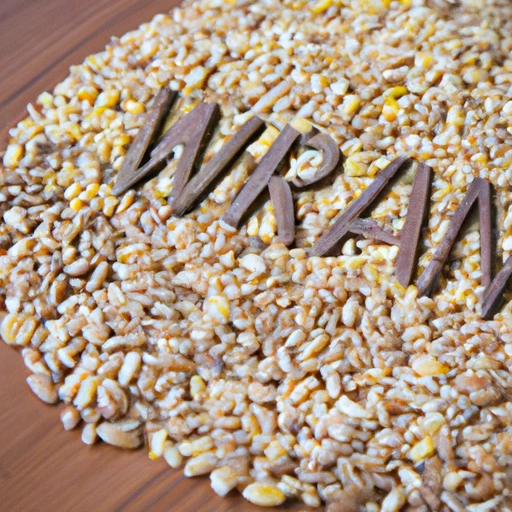Whole Grain
Description

Whole grain refers to the entire seed of a plant used for food, containing the bran, germ, and endosperm. Unlike refined grains, whole grains retain all their nutritive components, making them a richer source of dietary fiber, vitamins, minerals, and other essential nutrients. Whole grains can vary widely in shape, size, and flavor, encompassing wheat, rice, oats, barley, corn, rye, spelt, and more. Their inclusion in a balanced diet is associated with numerous health benefits.
Common uses
Whole grains are commonly used in a variety of food products, including bread, pasta, cereal, and snacks. They are also a popular ingredient in health-conscious and dietary-specific cooking, valued for their nutritional content and satiating properties.
Nutritional value
Calories
A 1/4 cup serving of dry whole wheat grains (approximately 45g or 1.6oz) contains about 150 calories (628 kJ).
Protein
This serving size provides approximately 6 grams (0.21oz or about 0.2 Avoirdupois ounces) of protein, contributing to muscle maintenance and growth.
Fat
Whole grains are naturally low in fat, with this portion containing around 1 gram (0.035oz or about 0.03 Avoirdupois ounces).
Carbohydrates
Carbohydrates are abundant in whole grains, with 30 grams (1.06oz or about 1 Avoirdupois ounce) present in a 1/4 cup serving, providing sustained energy.
Vitamins
Whole grains are a good source of B-vitamins, including thiamin, riboflavin, niacin, and folate, which play a vital role in metabolic health.
Minerals
Essential minerals such as iron, magnesium, phosphorus, zinc, and selenium are found in high concentrations in whole grains.
Health benefits
Consuming whole grains has been linked to a reduced risk of chronic diseases such as heart disease, type 2 diabetes, obesity, and some forms of cancer. The dietary fiber supports digestive health and aids in maintaining a healthy weight.
Potential risks
While whole grains are generally considered healthy, they may cause issues for individuals with gluten sensitivity or celiac disease. Additionally, improperly stored grains can become contaminated with mycotoxins.
Common recipes
Whole grains are versatile and can be used in recipes ranging from hearty breads and muffins to salads, pilafs, and hearty soups.
Cooking methods
They can be cooked by boiling, simmering, baking, or toasting, depending on the desired dish and texture.
Pairing with other ingredients
Whole grains pair well with a variety of foods including vegetables, legumes, nuts, seeds, dairy, and lean meats, making them an incredibly adaptable ingredient in global cuisine.
Summary
Whole grains are a nutritious and versatile food ingredient that plays an integral role in cuisines around the world. They provide a wealth of health benefits and can be prepared in countless ways, fitting into various dietary patterns and preferences. From a historical staple to a modern superfood, whole grains continue to be an essential part of a balanced diet.